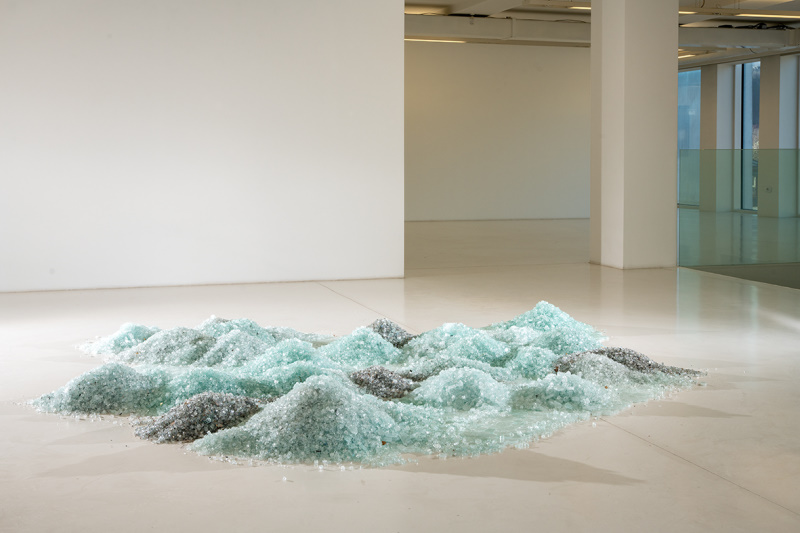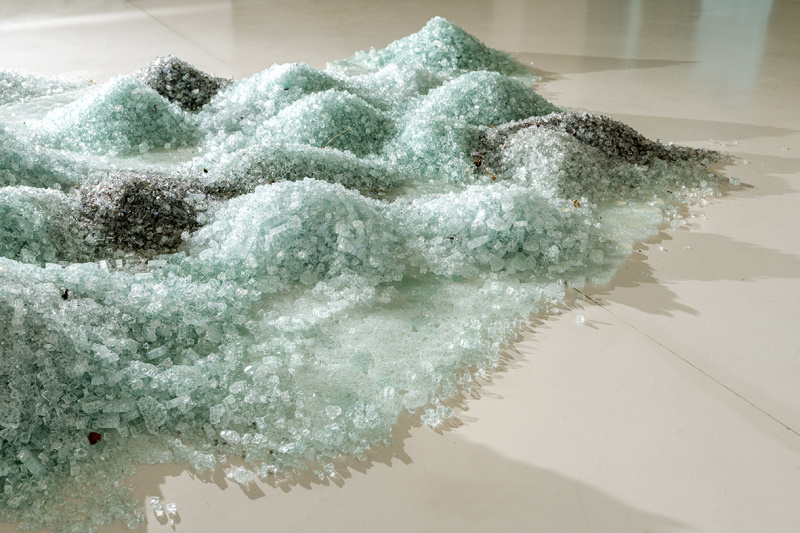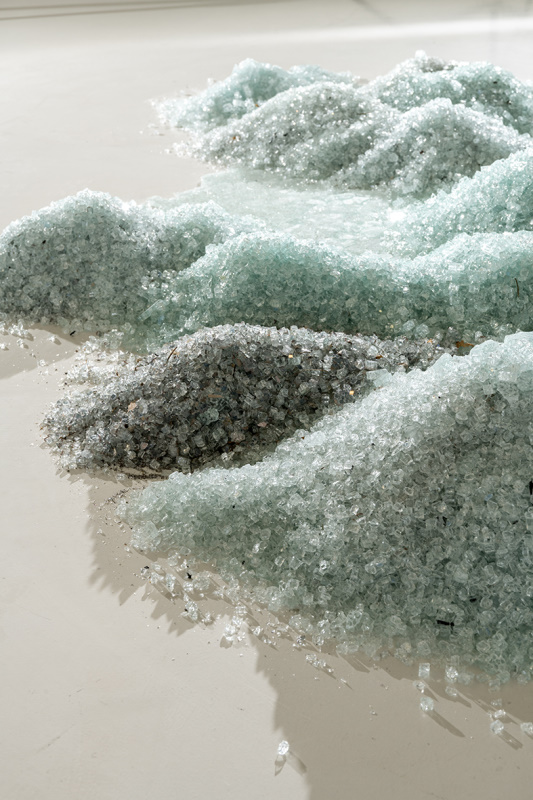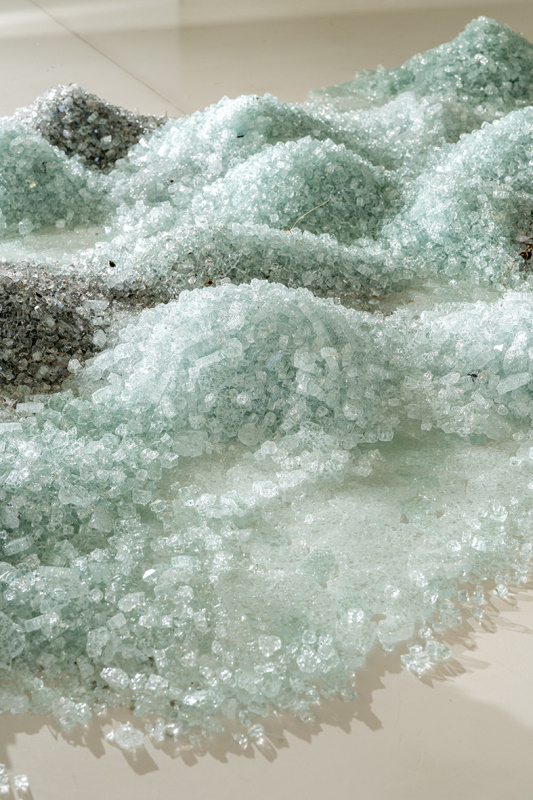Irena Lagator Pejović
works
- Lines, Values, Coexistences
- United Species
- Means that Can Contribute to the Phytoremediation of Polluted Areas
- Saved Books. The Art of Transmitting the Knowledge Without the Need for Subsequent Reparation.
- “I Would Put All Mighty Weaponry Into the Museums That No One Visits”
- Expanses of Love
- “If I Were Ronald Regan”
- Nets, Nodes, Horizons
- Workers University
- My Father’s Salary
- Fiscal Verses. Reprogramming the Machine
- Missing Content
- The Knowledge of the Limited Responsibility Society
- Shared Air
- Blurred Landscapes
- There is Already a Feeling of a Flow
- Symbiotic Collection
- Maximum Profit - Minumum Time
- This is Not a Landscape Any Longer. Tolerance, Transparency, Transition.
- Nature Culture
- Pillars and Horizons
- Where is the Monument?
- Forward Play Reverse
- Life and Institution
- Capital Culture Cuts
- Two Safes. No keys!
- Non LLC l.l.c.
- Plastic Water
- Society and Documents
- Exchange Value
- Work in Public Space
- Institution Nature
- LLC versus Non LLC
- Abbandoned Cinema
- Freedom Security Progress
- Occupying/Liberating Space and Time
- Directions
- Image Images
- Property
- Dissapearance Appearance
- Further than Beyond
- Image Think
- Ecce Mundi
- Camera Imaginata. The Means for Exchanging the Power of the Imagination
- Means for Intensifiying a Sense of Poetic Reconstruction of the World
- The Society of Peaceful Coexistence, Santa Croce sull’Arno
- Installation for Improving the Sense of Responsibility
- Equation Function
- Limited Responsibility Society, Santa Croce sull’Arno
- Resistence Reservoir
- Limited Responsibility Society, Polignano a Mare
- Limited Responsibility Society Automatism
- Experience Economy History
- The Society of Peaceful Coexistence, Belgrade
- Responsitorium Horizon Poems
- Time of Limited Responsibility Society
- Limited Responsibility Society Experiment, Salzburg
- Present Space Expansion
- Cultural Barriers to Growth
- Countinuous Limited Responsibility Society
- Knowledge of the Limited Responsibility Society
- Limited Responsibility Society Experiment, Strobl
- Limited Responsibility Society By Night
- Limited Responsibility Society, Cetinje
- Inverse Spaces
- Our Colored Everyday
- Machine Error. Shape a Book
- What We Call Real
- After Memory
- Next
- Is It Still Winter, Outside?
- The Way We Live
- How Small is the Universe
- Living Space
- The Society of Unlimited Responsiblity
- Own Space
- Living Room
- Near Universe
- An Embrace in the Space
- Light in Space
- Please Wait Here
- Wash Inside Out
- What is Missing
- Temporary Dumping Place. Rotations in the Given Space
- Opening of the Book
- Registrar
- May I Help You
- Passerby
- Are You Happy Now
- BBBBeauty
- Tell Why
- Witnes of Time - Now
- Witnes of Time
- It is Made for You
This is Not a Landscape Any Longer. Tolerance, Transparency, Transition.
2020
floor installation, fragments of broken facade glass from the same architectural facility in which the work is exhibited
30x200x200 cm
Exhibition/Venue: Night in Montenegro and Other Stories, Art gallery “Miodrag Dado Đurić“, 13. November salon, National Museum, Cetinje, Montenegro Curated by Petar Ćuković.
Photo of the installation: Lazar Pejović
The piece This is Not a Landscape Any Longer. Tolerance, Transparency, Transition stems from my many years of artistic and theoretical research into the history of the edifice of the branch of the National Bank of Yugoslavia in Cetinje, whose author was the Yugoslav architect Petar Vulović.
The installation makes visible the instability and fragility of the current socio-political and ecological moment of local and planetary character through the use of materials in emergence – fragments of broken facade glass from the same architectural facility in which the work is exhibited. The aim of this piece is a critical, but also poetic sensitization of our social being towards the effects of passivity and fragmentation of social responsibility that this piece testifies to. The piece also serves to encourage conversation about the present, about contemporary art while it is happening, especially when it comes to aspects of the landscape as an urban, architectural and environmental factor that continually shapes our perception.
In that process, I depart from Petar Lubarda’s statement “It is not a landscape” which he expressed while talking about his painting “Night in Montenegro” (1951), who, like his contemporary, the architect Petar Vulović while he was conceiving the original version (1960-64) of the bank - our present Art Gallery - was interested in the notions of derivatives and transformations of both the natural and the socio-political moments. I try to point out the potentials of consistent implementation of the process of tolerance and transparency from the local and specific to the current global transition of the Anthropocene, all in order to ask critiquing questions: how to learn from what remains; how to build on ruins?



